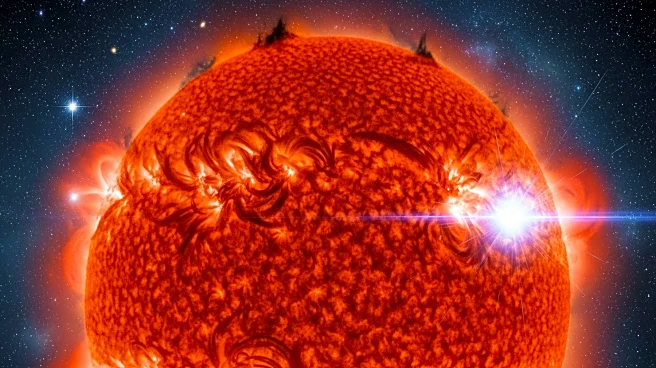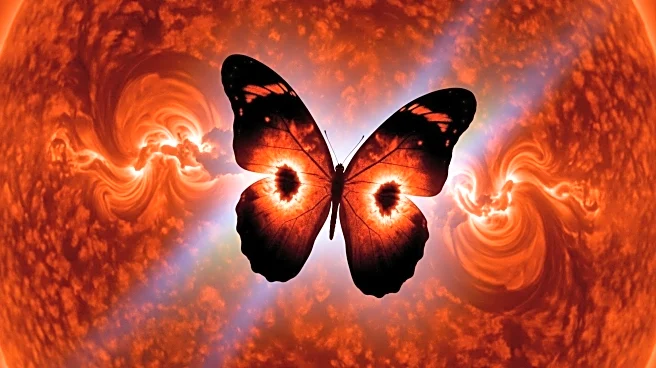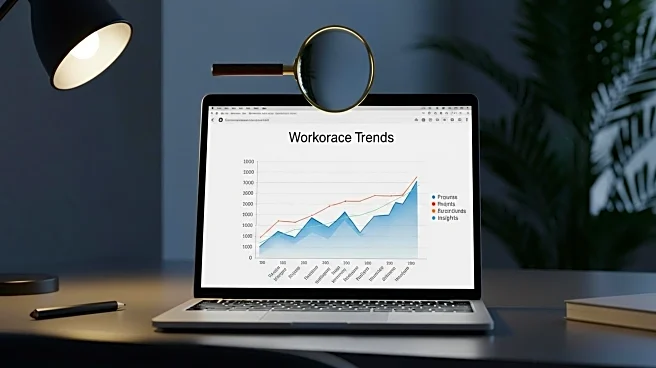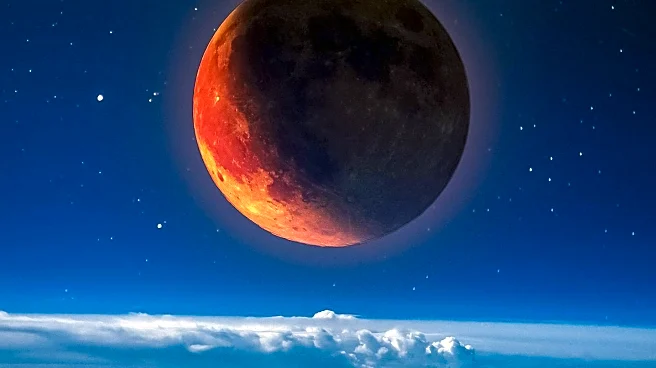What's Happening?
A significant coronal hole in the sun's atmosphere, shaped like a butterfly, is currently releasing a fast-moving stream of solar wind towards Earth. This phenomenon is expected to trigger geomagnetic storm conditions between September 13 and 14. The U.K. Met Office predicts active to G1 (minor) storm conditions, with the possibility of reaching G2 (moderate) levels. NOAA's Space Weather Prediction Center has issued a more conservative forecast, anticipating peaks of G1 conditions. Geomagnetic storms occur when solar wind interacts with Earth's magnetic field, causing charged particles from the sun to collide with atmospheric gases, resulting in auroras. The Russell-McPherron effect, which occurs around the equinoxes, enhances geomagnetic activity by aligning Earth's magnetic field with the interplanetary magnetic field carried by the solar wind.
Why It's Important?
The potential geomagnetic storm could have significant implications for various sectors. Geomagnetic storms can disrupt satellite operations, GPS systems, and power grids, posing challenges for industries reliant on these technologies. Additionally, the increased likelihood of auroras presents opportunities for tourism in regions where these natural light displays are visible. The Russell-McPherron effect, which boosts geomagnetic activity during equinoxes, highlights the importance of understanding seasonal variations in space weather. Stakeholders in technology, energy, and tourism sectors may need to prepare for potential disruptions or capitalize on the increased aurora visibility.
What's Next?
If a G2 storm develops, auroras could be visible at mid- to high-latitudes across the Northern Hemisphere, including regions such as Canada, Alaska, Scandinavia, and northern parts of the U.K. In the Southern Hemisphere, auroras may be seen over Antarctica, with a slight chance of visibility from Tasmania and southern New Zealand. Space weather forecasters will continue to monitor the solar wind's impact and provide updates on storm conditions. Industries affected by geomagnetic storms may implement contingency plans to mitigate disruptions, while tourism sectors may promote aurora viewing opportunities.
Beyond the Headlines
The occurrence of geomagnetic storms during equinoxes due to the Russell-McPherron effect underscores the complex interactions between solar and terrestrial magnetic fields. Long-term studies indicate that geomagnetic storms are more frequent during equinox months, suggesting a need for ongoing research into space weather patterns. Understanding these dynamics can improve forecasting accuracy and help mitigate the impact of space weather on technological infrastructure.













